
views
Carving Linoleum
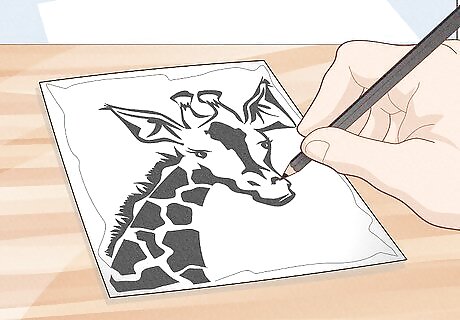
Draw the design you want to create on a piece of paper. Grab a piece of paper that’s roughly the size of your linoleum block. Use a graphite pencil to draw your design onto the paper, drawing it backwards to create a mirror-image of the final print. Remember that you’ll be carving into the printing block to create a relief image, which means the lines you draw become the negative space of the finished design. Some image editing software can "invert" your design, switching the black to white and vice versa. This can help you visualize the final design better. The same software can also “flip” or “mirror” images for you. If you have trouble drawing letters or images backwards, this software can help tremendously.
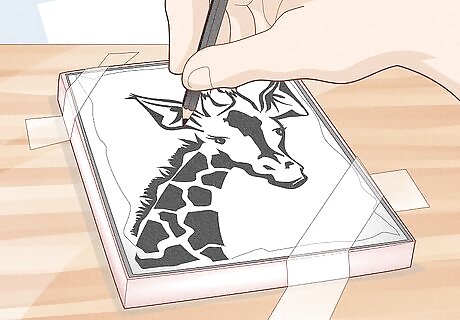
Trace your design onto your linoleum block. Tape a piece of transfer paper directly onto the block with the shaded side of the page against the surface of the block. Then, tape or clamp your design over the lighter side of the transfer paper. Using a pen or stylus, trace your design entirely. The ink on the back of the transfer paper will leave a “carbon copy” of your design on the surface of the block. When your design is fully transferred, carefully remove the tracing paper from your linoleum block.
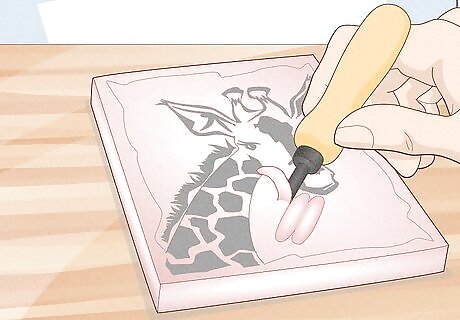
Remove the negative space from your design. Block printing is all about creating a “relief” image, meaning the lines you carve out will become the negative space of your finished print. As you begin to carve, plan out which areas you’d like to keep and which ones you want to remove to create your design.

Carve out large chunks of lino with a large blade. To remove big sections of linoleum, grab the biggest blade that you can find. Set the linoleum on a flat surface, and carefully push the blade into the linoleum away from you. Carve in long, straight lines, being careful to follow your design the entire time. It’s helpful to hold the linoleum block in 1 hand and hold the blade in the other. Just make sure that the blade is always pointing away from you, and that you’re never cutting toward your hand or your body. Instead of buying individual blades, purchase a tool set with multiple blades to choose from.
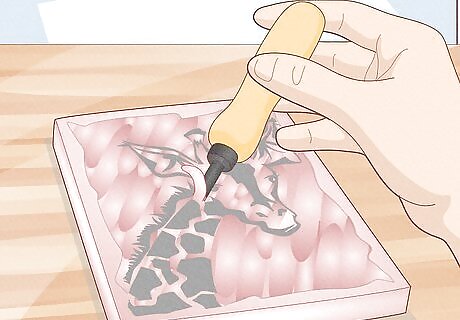
Carve out smaller details with a small blade. For detailed line work, switch to a smaller blade. Hold the linoleum in 1 hand and the blade in the other, then carefully push the blade into the block, pointing it away from your body. Work in short, even strokes to carefully follow the lines of your design.
Printing with Carved Linoleum
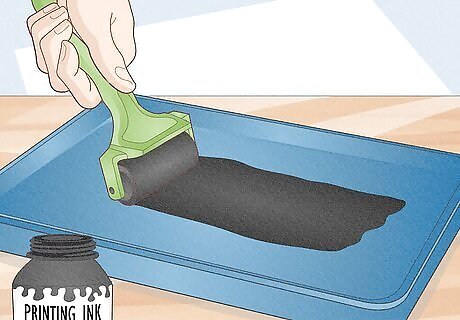
Roll printing ink onto a glass or plastic tray. Printing ink is sticky and much thicker than other inks. It also dries very quickly. Using a brayer (ink roller), spread the ink on a glass or plastic plate and roll it smooth. If you are printing onto fabric, use oil-based ink. Oil-based inks will stain clothes and surfaces, so prep your work area carefully. Put down cardboard or newspapers to avoid staining any surfaces, and wear old clothing that you don’t mind getting ink on.
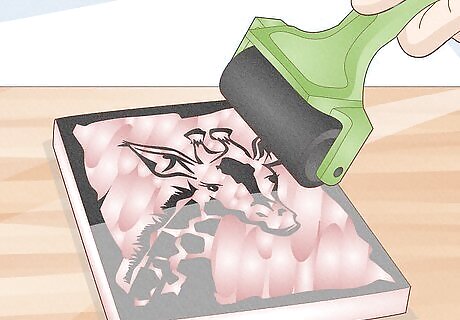
Coat the surface of the block with a thin layer of ink. Use the ink roller to spread the ink evenly over your carved printing block. Hold the ink roller completely flat to avoid getting ink in any areas that aren’t supposed to have it. Make several passes over the block to ensure you’ve got even coverage. It might take you a few tries to get your ink coverage perfect, and that’s okay! Many professional print-makers do test prints 2 to 3 times until they figure out the right coverage for their print.
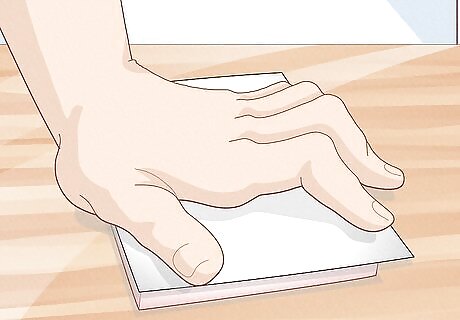
Press the paper or fabric over the block. Keep the linoleum block face up on a flat surface. Carefully press a sheet of paper or fabric over the block, then use a baren (printmakers' rubbing tool) or wooden spoon to slowly press on the back of the paper or fabric. Rub your entire design onto the paper or fabric in small circles. If you’re using a small block, like a stamp-sized block, simply press the inked block onto your paper or fabric.
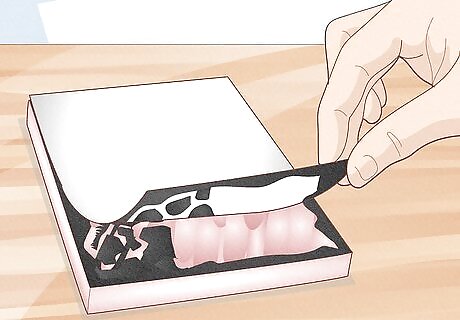
Peel the paper or fabric off the linoleum block. Once you’ve pressed the ink into your medium, grab a corner of the paper or fabric and slowly lift it up. Try not to move your paper or fabric too much to avoid any smudging. If you’re using a stamp-sized block, just pick the block back up off your paper or fabric.
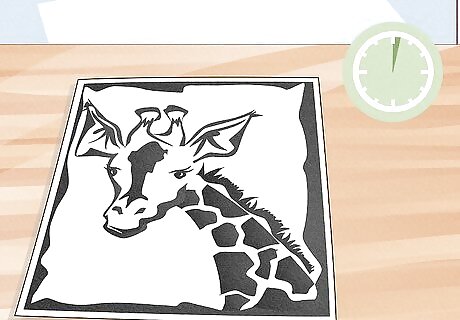
Let the print dry for at least 2 hours. Printing ink takes a while to dry because it’s so thick. Set your paper or fabric on a flat surface and leave it to dry for at least 2 hours, or longer if your ink says to do so. While you wait for your design to dry, feel free to do more prints! You can print your design as many times as you’d like by following the same instructions above.
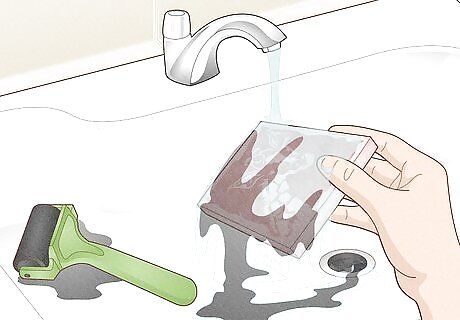
Clean your print block and tools thoroughly when you’re done. If you used water-soluble ink, wash your materials with soap and water. If you used oil-based ink, use mineral spirits to wash your lino block and tools. Mineral spirits can cause skin and eye irritation. Wear gloves when handling mineral spirits, and keep it away from your face and eyes. Mineral spirits are flammable. Store your bottle of mineral spirits in a cool, dark spot to avoid any issues.
Block Printing With Sponges or Foam

Use sponges or foam for less detailed projects. Sponges and foam can make excellent print blocks for crafts at home. They work well with water-based as well as acrylic hobby paints to “stamp” simple prints on paper and fabric, but they hold much less surface detail than wood and linoleum. Different kinds of foam you find around your house, such as styrofoam, can work to make simple outline stamps. However, the denser, specially made “foamcore” available at craft stores will hold noticeably more surface detail and last much longer.

Draw your design directly onto the sponge or block of foam. Because these materials will be used mainly as stamps, the outline of the shape is the most important part of the design. Use a pencil to draw a simple image onto your foam or sponge. Remember that your design will print backwards! If you’re printing letters or numbers, draw them on backwards in order for them to be the right way round when printing.
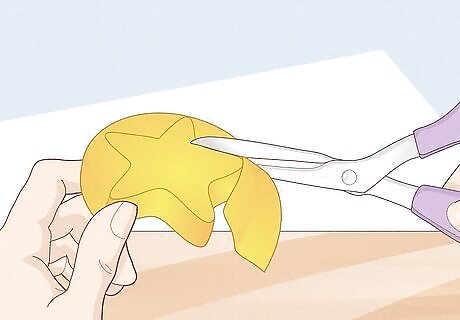
Cut out your design with scissors. Using a pair of scissors or a craft knife, cut the shape out of the sponge or block of foam. Then, use the scissors to gently carve any lines or details into the foam or sponge. The resulting shape will be your printing stamp. Always cut away from your body and fingers!
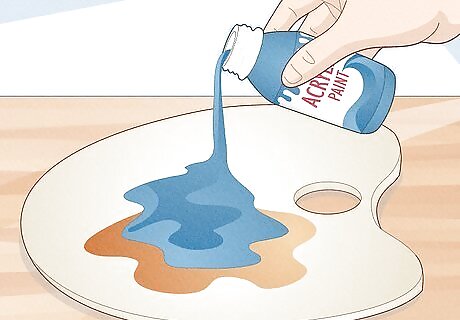
Spread paint or ink onto a palette. Mix up the color and consistency of the paint you want to use on a palette or mixing slate. You can use acrylic paint, or you can use water-based ink.
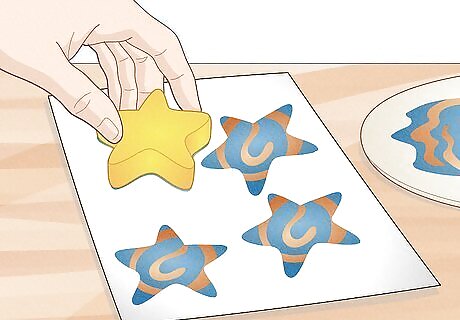
Pick up ink with your stamp, then stamp it onto paper. After wiping off any excess paint from the stamp, simply press the block down on your medium. Depending on how absorbent the material is, you may be able to get a few printings from each application of paint.


















Comments
0 comment